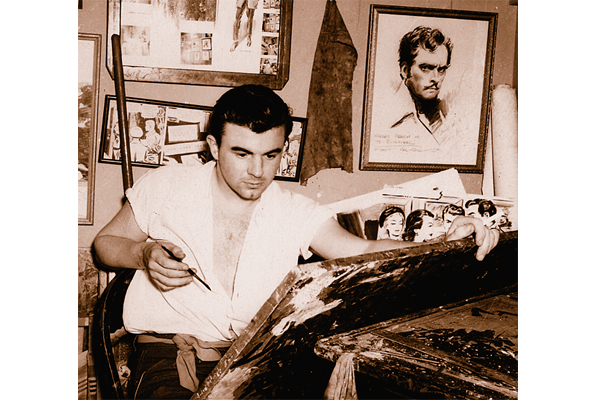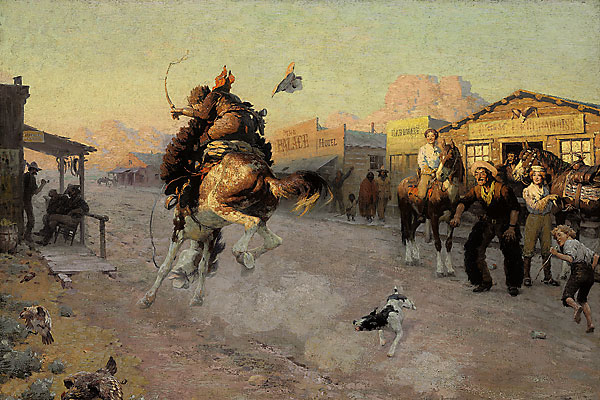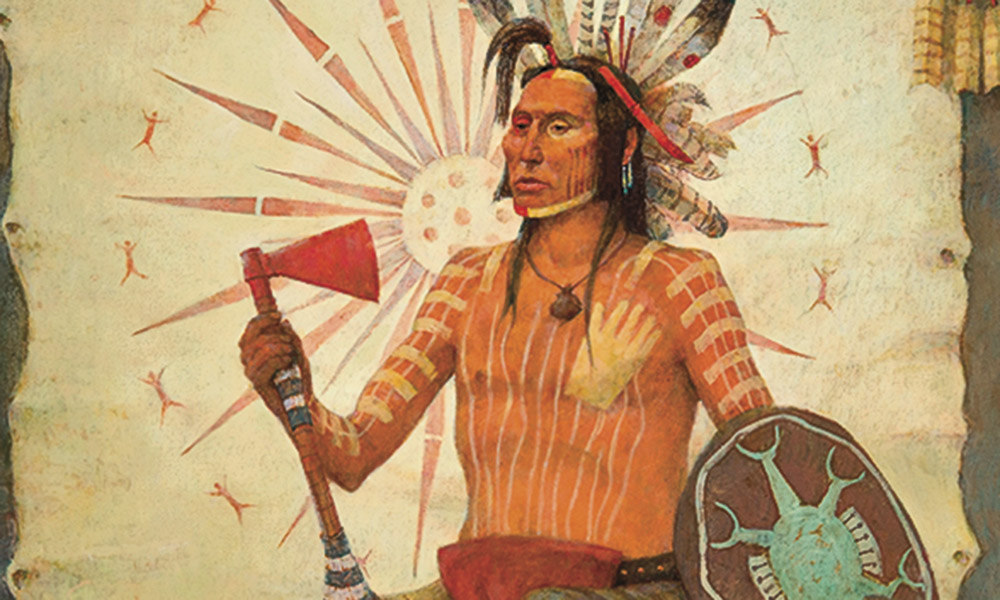 “Looking back, I wasn’t so bad.
“Looking back, I wasn’t so bad.
“Dropping out of high school at the age of 16 to pursue a career in art wasn’t an option,” admits Everett Raymond Kinstler, who is two days younger than Tony Bennett whom he went to high school with 65 years ago. “It was a necessity. The kind of art I liked was discouraged. Ever since I was a kid, copying magazine illustrations and Flash Gordon comics by hand, I knew I wanted to be an artist. Once I made the commitment, I never looked back.”
That’s quite an admission from a man whose career has spanned the evolution of magazine and comic book publishing, as well as trends in fine art. His confirmed success today as a portraitist and landscape painter is acknowledged nationwide by collectors and critics alike.
With an innate talent that provided a true vocation, Kinstler found work illustrating favorite Western subjects, including Hopalong Cassidy and Tom Mix among others, for Fawcett Publishing. In those days, 200 pulp magazines published monthly required six to 10 illustrations per issue and the demand for artists was huge. In 1950, Kinstler rendered adaptations of Pancho Villa, Teddy Roosevelt & His Rough Riders and Kit Carson for Avon. Shortly thereafter, he was hired to illustrate an elaborate version of the Sword of Zorro for Dell Publishing, which was hugely successful. He continued re-creating sequels until 1956. “I remember meeting Douglas Fairbanks, Jr. and telling him how I based my Zorro character on images of him and his father. I was inspired by many, including the original Westerns with John Wayne, Randolph Scott and Gary Cooper.”
With unerring detail, Kinstler’s extra-ordinary illustrations depicted adventure, drama, suspense, romance and almost palpable love and lust. From gunslingers to sultry barroom beauties, he made us feel the heat. “I like to refer to this period of my life as the ‘cowboys and cleavage era,’” explains Kinstler candidly. “Sex and action sold books, so my covers had both.” The additional illustrations created for Short Stories Magazine, Dime Western, Adventure Magazine and Ranch Romances had great meaning for him. “Their stories attracted me, and I found a way to share them. I became then, and still am, a narrative painter.”
In 1949, Kinstler rented space at the National Arts Club in New York where he was mentored by the legendary artist Frank Vincent DuMond. In 1953, he moved into his current NYC studio and transitioned to the world of fine art and portraiture, his passion today. “I try to create a point of view interpreting my subject and bringing life to my portraits. Who the person is, not just what he looks like.”
In an illustrious career that includes a PBS video documentary and three hardcover illustrated biographies in print, Kinstler enjoys many honors. He’s painted the White House portraits of Ronald Reagan and Gerald Ford, plus three other presidents, and boasts a client list that mirrors American popular culture. But unlike so many other artists who moved on when the pulps faded and magazine illustration became nearly obsolete, Everett Raymond Kinstler stands alone. In love with life, he’s still telling stories with his brush.






